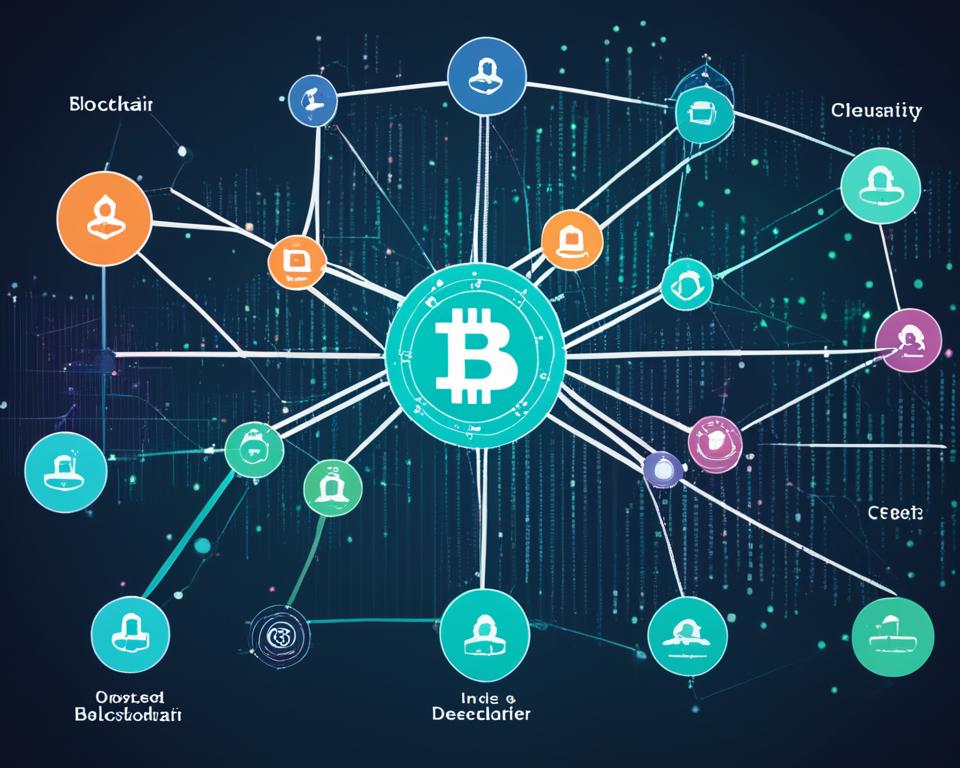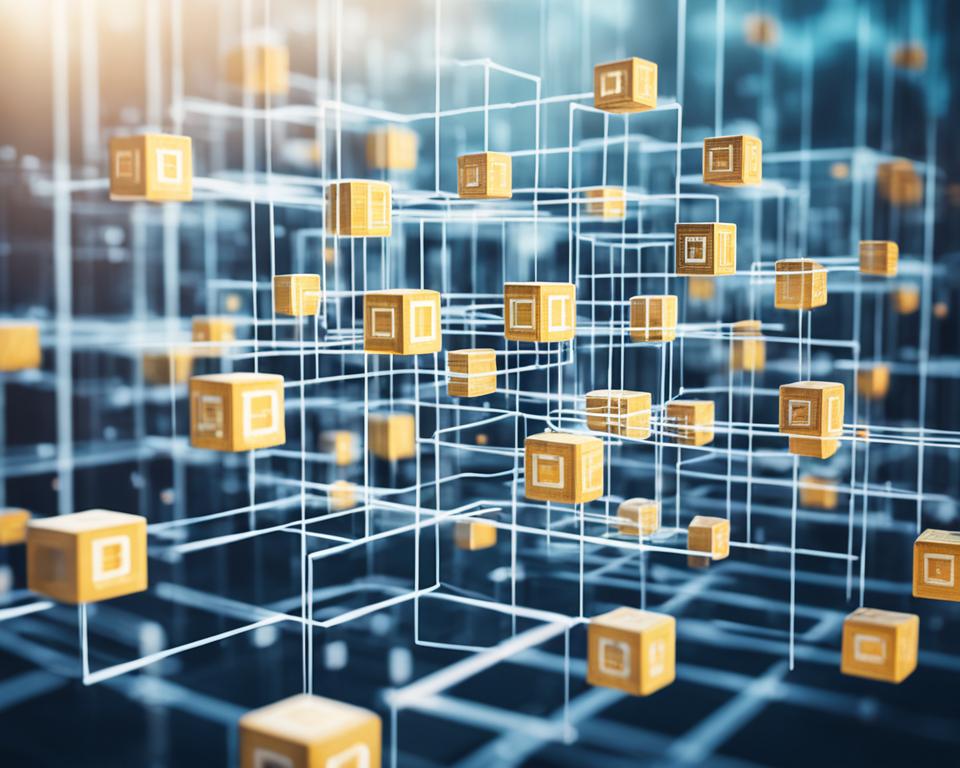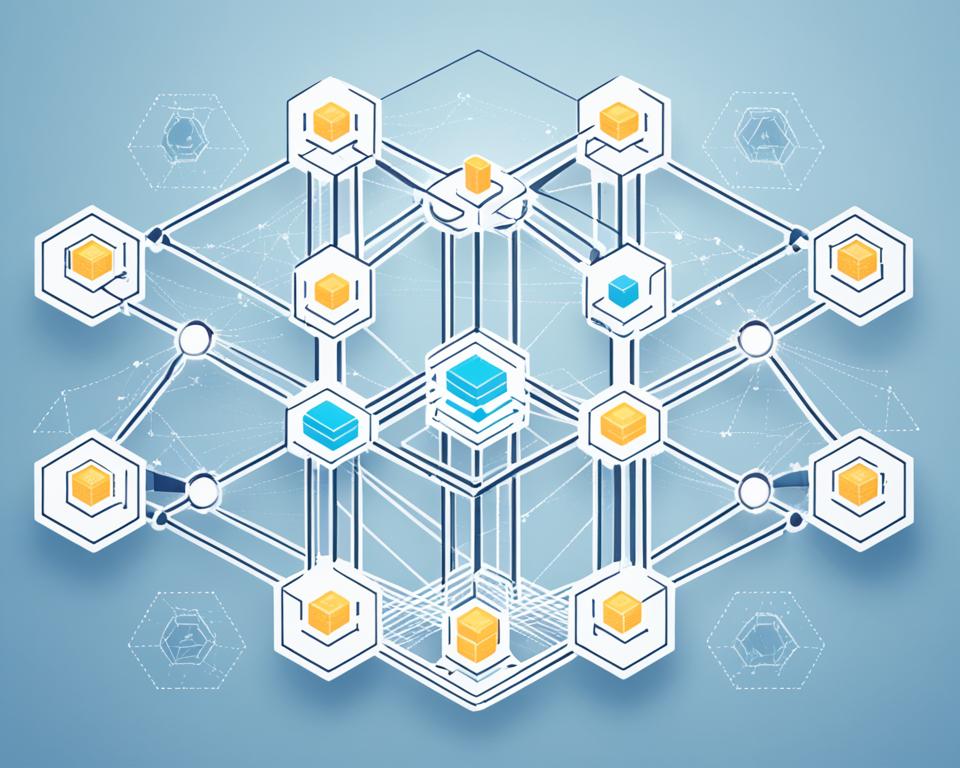Physical Address
304 North Cardinal St.
Dorchester Center, MA 02124
Physical Address
304 North Cardinal St.
Dorchester Center, MA 02124

Discover the fundamentals of blockchain technology, a decentralized, transparent, and secure digital ledger revolutionizing finance, supply chains, and beyond.
In today’s fast-moving digital world, one tool stands out – blockchain. What is blockchain and why is it important? Let’s look at the basics.
At its core, a blockchain is a shared database or ledger among many computers, called nodes. It’s most famous for supporting cryptocurrency systems. It keeps a safe and decentralized record of transactions. But blockchain isn’t just for currencies. It’s used in different fields, like smart contracts and improving supply chain management.
Blockchain makes data immutable, meaning it can’t be changed. It uses advanced cryptography and consensus mechanisms to protect data. This lowers the need for middlemen. Thus, it makes processes more efficient and cost-effective.
Starting with Bitcoin in 2009, the blockchain world has grown. Now, we have many cryptocurrencies, decentralized finance (DeFi), non-fungible tokens (NFTs), and smart contracts. These new techs could change the way we deal with digital things like assets, data, and deals.
So, what makes blockchain different from old databases? How can it help in business and daily life? We’ll answer these as we look closer at this tech. The main question is: How does blockchain change how we keep, protect, and share info?
A blockchain is like a shared, digital ledger across a computer network. It is different from a usual spreadsheet or database. The way it structures and accesses data is unique. It uses programs to manage the tasks of inputting, accessing, and saving information.
The key thing about a blockchain is it’s spread out across many machines. As a result, all copies of the data have to match for it to be true. This way, it gains its transparency and security by not relying on a single point.
Across the network, each machine or device can have a copy of the data. This avoids a single point of failure and protects the data’s truth. So, it ensures that the network holds together the integrity of its information, making it hard for anyone to change data undetected.
Blockchain is strong and safe thanks to advanced encryption methods. Data is added classifiably and orderly. Once added, this info cannot be changed without altering all coming data. Therefore, the whole network must agree to any change in the chain, keeping records forever true.
Blockchain works through a set of key processes. They securely record transactions in a decentralized and transparent way. It uses the creation and validation of blocks that store transaction data. Also, it involves mechanisms for distributed consensus to maintain the blockchain’s integrity.
Each block of the blockchain has a unique ID, timestamps for transactions, and the previous block’s hash. This creates an unchangeable chain of blocks, making the blockchain secure. When a new transaction happens, it joins a block and gets encrypted. This encryption is like a unique fingerprint, showing if anyone tries to change the data.
Blockchain works without a single authority because of its distributed model. This means many nodes on the network work together. They validate and add new transactions to the decentralized ledger. Miners or validators in the network solve difficult math problems to secure transactions. After consensus on a block, it joins the blockchain, confirming the ledger’s state.
Bitcoin uses a proof-of-work system for its network security. Miners solve complex cryptographic puzzles to validate blocks. The first one to solve this gets new Bitcoin as a reward. This mining process is how the Bitcoin network stays safe and secure. It relies on incentivizing people to put in their computing power.
| Blockchain Network | Consensus Mechanism | Transaction Confirmation Time | Hash Rate |
|---|---|---|---|
| Bitcoin | Proof-of-Work | Approximately 1 hour | 348.1 exahashes per second |
| Ethereum | Proof-of-Stake | Approximately 6 minutes | 1.1 petahashes per second |
Blockchain is all about getting rid of central leaders. This technology spreads data across many places, like computers. This means no single group or person controls everything. Instead, everyone involved shares the power.
By removing the central authority, blockchain boosts trust. Imagine a system where many people oversee everything, not just one. This helps keep data safe from anyone trying to change it behind everyone’s back.
One cool thing about blockchain is that everyone can see what’s happening. Instead of hidden changes, all updates are out in the open. This stops sneaky actions because they’d be seen right away by anyone looking.

Blockchain technology provides security and trust in a unique way. It uses cryptographic hashing and block chaining. These ensure the security and trust of blockchain data. New blocks are added to the “end” of the chain over time. Once a block is added, you can’t change previous blocks. Trying to do so would mean changing the hash of that block. Changing this data would cause a ripple effect, making all following blocks invalid. Therefore, any unauthorized change would be detected and blocked by the network.
However, there’s a risk of a 51% attack. This happens if a single entity controls over half of the network’s computing power. They could then change the blockchain. This could lead to double spending or undoing transactions. Protecting against this attack is a big challenge, especially for large public blockchains.
| Blockchain Security Feature | Description |
|---|---|
| Cryptographic Hashing | Blockchain’s security is based on cryptographic hashing. Each block has the previous block’s hash, making any change obvious. |
| 51% Attack Resistance | Blockchains work to resist 51% attacks. If an entity gains too much power, the network makes it hard for them to change the data. |
| Decentralized Consensus | Decentralized consensus methods, like PoW or PoS, help keep the network secure. They avoid relying on single authorities. |
| Immutable Records | Once data is in a block, it can’t be changed without the network’s agreement. This keeps blockchain information trustworthy and auditable. |
Even with strong security features, blockchain has its risks. It’s important to address these with security practices. This includes risk checks, secure ways to talk, and making sure only the right people have access. Doing so helps maintain the safety and strength of blockchain applications and services.
Blockchain technology is changing the game in many fields, not just cryptocurrency. It’s a shared database spread across a network without a central control. This trait makes it trustworthy, without the need for middlemen, boosting data safety.
Since Bitcoin started in 2009, the concept of blockchain has grown. Now, it’s used for a lot more than just cryptocurrencies. It’s behind things like DeFi, NFTs, and smart contracts. Its strong security and unchangeable records have sparked creativity in business, identity management, and voting systems.
So, what’s the big deal about blockchain? It creates a safe, open, and scattered way to save transaction details. It does this without needing a central body. This opens doors for new ways of working together, exchanging value, and managing data without worries about interference or fraud. It could change the game in many sectors, making data and money management more efficient and secure.

Blockchain technology is not just for cryptocurrencies. It also revolutionizes many industries. For instance:
Since 2009, Bitcoin has sparked a rise in blockchain innovations. Now we have DeFi, NFTs, and smart contracts. The network is powerful but takes about an hour to confirm a transaction. This is due to each block taking under 10 minutes on average.
In supply chain management, blockchain boosts transparency and efficiency. It records every step in the movement of goods. This approach fights counterfeiting and makes recalls quicker and more precise.
For digital identity, blockchain offers safe data sharing. This reduces risks like identity theft. It’s also great for secure, transparent data sharing in fields such as healthcare and finance.

Blockchain and traditional databases are both digital ledgers, with key differences. The main difference is how they collect and manage data. Each has its own unique architecture and data handling process.
Blockchain uses a decentralized system with many computers, all keeping and confirming information. This is in contrast to traditional databases. These often have one central controller overseeing the database.
Blockchain is praised for being immutable and transparent. Once something is on the blockchain, it’s almost impossible to change. This protects the data’s accuracy. On the other hand, traditional databases can face risks like unauthorized changes, since the entire system relies on a single central point.

Blockchain’s design encourages transparency too. Anyone in the network can see all transactions and records. This openness aids in building trust and ensuring everyone is accountable. Traditional databases, in contrast, often keep their workings hidden, available only to a select few.
The differences outlined shed light on how blockchain could revolutionize many sectors. It promises a more secure, clear, and open way to manage data and records.
In the blockchain world, we have public and private networks. Public blockchains are open to everyone. They allow anyone to take part. They’re decentralized. Private blockchains, on the other hand, are more controlled. Access is limited.
Public blockchains are permissionless. They don’t need permission to join. They welcome all without checks. This makes the network free from a single authority. Private blockchains, in contrast, are permissioned. The admins decide who joins.
Public blockchains aim for decentralization. Private blockchains target efficiency and immutability. This makes them fit for big business needs. Companies like Walmart use private blockchains for things like supply chain tracking. Technologies like Hyperledger Fabric help with this.
Also, there’s Blockchain-as-a-Service (BaaS). It cuts common barriers and costs. So, businesses find it easier to use blockchain tech.
| Characteristic | Public Blockchains | Private Blockchains |
|---|---|---|
| Access Control | Open to anyone | Controlled by network administrators |
| Decentralization | High degree of decentralization | Centralized control |
| Permissions | Permissionless | Permissioned |
| Security | Secured by the large number of network participants | Prioritize efficiency and immutability |
| Use Cases | Cryptocurrencies, DeFi, and other decentralized applications | Enterprise-level applications, supply chain management, and traceability |
The choice between public and private blockchains relies on organization needs. Public ones offer decentralization and openness. Private ones give more control and are efficient for big applications.
Blockchain technology is changing the game across many fields, not just in digital money. It offers a way to keep records that’s open to everyone, secure from changes, and spread out among many people. This method can make things work better, keep information safe, and bring new uses to life, like supply chain management and healthcare.
This system makes cheating really hard. Each action is checked by a group, not one boss. This group guarding the actions makes deals safer and quicker than the old ways.
Even though deals can take different times to finish in a blockchain, once it’s done, it can’t be undone. This means no one can sneakily spend money twice. Also, everyone can join and see how it works, which helps keep things fair, clear, and fresh in the [blockchain conclusion].
The world keeps finding new ways to use blockchain. Its key strengths are its fairness, safety, and how it shows transactions openly. This is changing how business and many other parts of our lives work. The future is bright for the [blockchain conclusion], making our digital dealings more reliable and innovative.
Blockchain technology is changing the world far beyond just digital coins. It has created a secure and open place for digital records. This allows for smoother ways of working, better data checks, and new uses in many fields. These fields include how we handle supply chains, personal info online, and even our health.
It’s getting more popular as a way for different groups to trust each other online. Blockchain is already making big changes in finance, shipping, and health care. It’s like a digital log book that can’t be changed, helping with keeping data safe, following products, and making deals. Combining it with new tech like the Internet of Things (IoT) and artificial intelligence (AI) makes its future even brighter.
As blockchain keeps growing, it will focus more on being easy to use, big enough for companies, and following the rules. Making it work for lots of people will take everyone working together. This means tech experts, business people, and those who make the rules need to team up. If they solve the big challenges together, we could soon be living in a world full of safe, clear, and new ways to deal with online info and trade.